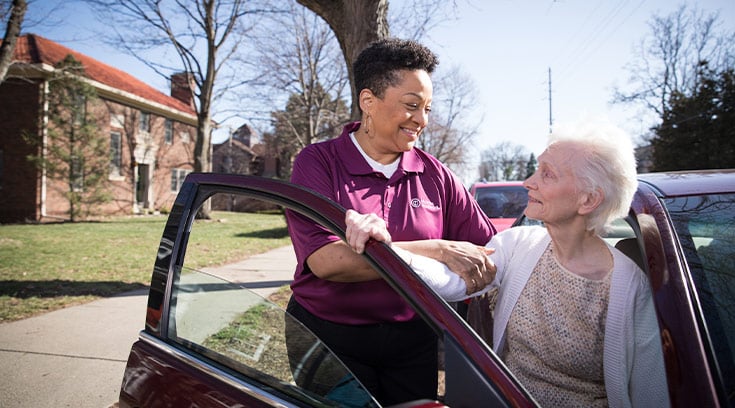Technology has come a long way over the course of older adults' lifetimes. They have witnessed everything from men landing on the moon to dramatic medical advances and the rise of an Internet-dependent society.
Older adults also bear witness to the ways technology is changing the face of aging: keeping socially connected with loved ones, staying physically and mentally active and extending their ability to live safely at home longer. You can help your aging family members master technologies that provide these three major benefits – and more.
1. Social Connection
Video Chat and Social Media Keep Older Adults in Touch with Long-distance Loved Ones
Numerous studies have shown that social connection plays a key role in health and longevity. People who maintain strong bonds with family and friends tend to eat better and avoid habits like smoking and excessive drinking that can cause an earlier death. On the flip side, isolation and loneliness confer a higher risk of mortality.
While no technology can take the place of in-person human interaction, solutions like a tablet or laptop computer can enhance personal care for the client and promote social connection. The older adult or family members can engage in video chats and share photos of special events or milestone moments (the great-grandbaby’s first birthday, for instance) that the senior is unable to attend – so the loved one still feels like an important part of the family.
2. Staying Active
Technology Serves Up Music and Games Get Older Adults Moving Physically and Mentally
Devices like a tablet can play music from an older adult’s youthful era, which might get them up and swaying. Waltzing around the living room can provide vital exercise that’s easy, enjoyable and keeps seniors active.
Of course, the brain needs exercise, too. Video games may seem like a suggestion for a much younger person, but older adults can exercise their spatial recognition, recall and memory skills by playing video games, too.
A tablet offers gaming options. Games that require matching can help them keep their brains as active as their bodies.
Beyond the physical benefits of exercise, aerobic activities and brain games can reduce episodes of depression in seniors. Physical activity has been proven time and again in studies to improve mood and lessen anxiety. Using technology to help seniors stay active is a real benefit of modern life.
3. Safety
Technology Allows Older Adults to Live at Home Safely
Many families first look into getting in-home care because they’re fearful of their loved one’s ability to live safely at home. Falls remain a leading cause of death for people over age 65, and other activities of daily living – such as measuring a precise insulin dose – can jeopardize a senior’s health if they become unable to manage the task.
Here again, technology provides a great benefit. Not only can family members easily initiate a video chat through a smartphone or a tablet to see with their own eyes how their loved one is doing, but combining the medication management skills of a Care Professional with the technology of the tablet to track prescriptions can keep an older adult safe at home for a long time. Plus, family members can consult the Care Pro during a shift to receive updates about their loved one’s health and safety or medication status.
These three major benefits of technology for older adults – social connection, staying active, and keeping safe – only touch the top of the iceberg. A tablet, smartphone apps and computers deliver all the interactivity any older adult needs to avoid loneliness, keep in touch with friends and relatives and live more safely in the comfort of their own home.
Compassionate Home Care

